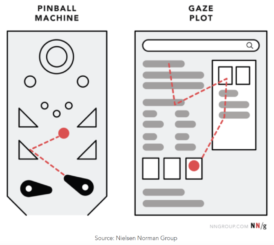New Challenges Facing SEO Practices

Search Engine Optimization (SEO) remains the foundation of digital marketing, with search driving around 50% of website traffic on average. In recent years, it has become increasingly more challenging to drive organic search to your website.
The MarTech Enterprise SEO Platform: A Marketer’s Guide digs into some of the new complexities around SEO. And we read it so you don’t have to! Here are some of the top takeaways from the guide:
Zero-Click Searches
SEO practices today have to compete with monetization efforts and “zero-click searches.” Zero click searches occur when the answer to the user’s query is displayed within the search results page and the user doesn’t need to click to another page to get their question answered.
A SparkToro analysis of SimilarWeb data from 2020 found that nearly two-thirds of searches on Google now end without a click on a result. See the chart below.

The Pinball Pattern
Google offers several unique features, such as the Knowledge Graph, Direct Answers, and FAQs, on its Search Engine Results Pages (SERP) to keep users engaged.
These features affect the way users interact with the search results and what they click on or if they click at all. Based on the search results, different displays and layouts are generated. Nielsen Norman Group eye-tracking studies find that users need a moment to process the SERP before making a decision. This results in what the user experience company called a “pinball pattern” in eye movement, see the graphic below.

The Nielsen Norman Group found that these visually-rich displays are viewed by 74% of searchers while only 28% of clicks go to the first result under the search box.
They also found what they call a “love at first sight” behavior pattern on SERPs, where 20% of people focus on a single result on a page and believe it to be sufficient to answer their question.
Content is still king
The best way to respond to these changes is to develop content that anticipates the questions users are asking, which is what Google has been telling us all along. As Google explains in a help document: “Give visitors the information they’re looking for. Provide high-quality content on your pages, especially your homepage. This is the single most important thing to do.”
Google’s Guidelines for Quality Raters uses the acronym E-A-T – expertise, authority, and trustworthiness. According to the Guidelines: “High-quality pages and websites need enough expertise to be authoritative and trustworthy on their topic.”
Successfully structuring data
Websites not only need to produce the right content, but they also need to format their content in a way that search engines understand it more easily. Google uses structured data – code added to a site that tells the search engine exactly what is being presented – to display rich results tailored to the particular type of content.
User experience
In 2020 Google introduced the concept of “Core Web Vitals,” which are technical standards designed to quantify how well the page loading experience performs against user expectations. These, along with mobile friendliness, safe browsing, and the use of HTTPS, are what make up the user experience. Core Web Vitals include:
- Largest Contentful Paint (LCP) measures how fast the largest image or text loads. Under 2.5 seconds is best.
- First Input Delay (FID) looks at the time from when a user first interacts with a page (click a link, tap on a button, etc.) to when the browser actually responds. Under 100 milliseconds is the standard.
- Cumulative Layout Shift (CLS) measures how often the page layout unexpectedly changes, like when something starts to load in one place, then changes its location on the page. A CLS score of 0.1 is considered the standard.
Conclusion
Search standards and search engine algorithms are constantly changing. It may seem impossible to keep up, but it’s vital for digital marketers to stay informed. One thing we know is that content matters. If you don’t have quality content on your website you’re missing the mark.
By Kayla, Account Manager & Strategist | February 11, 2022




